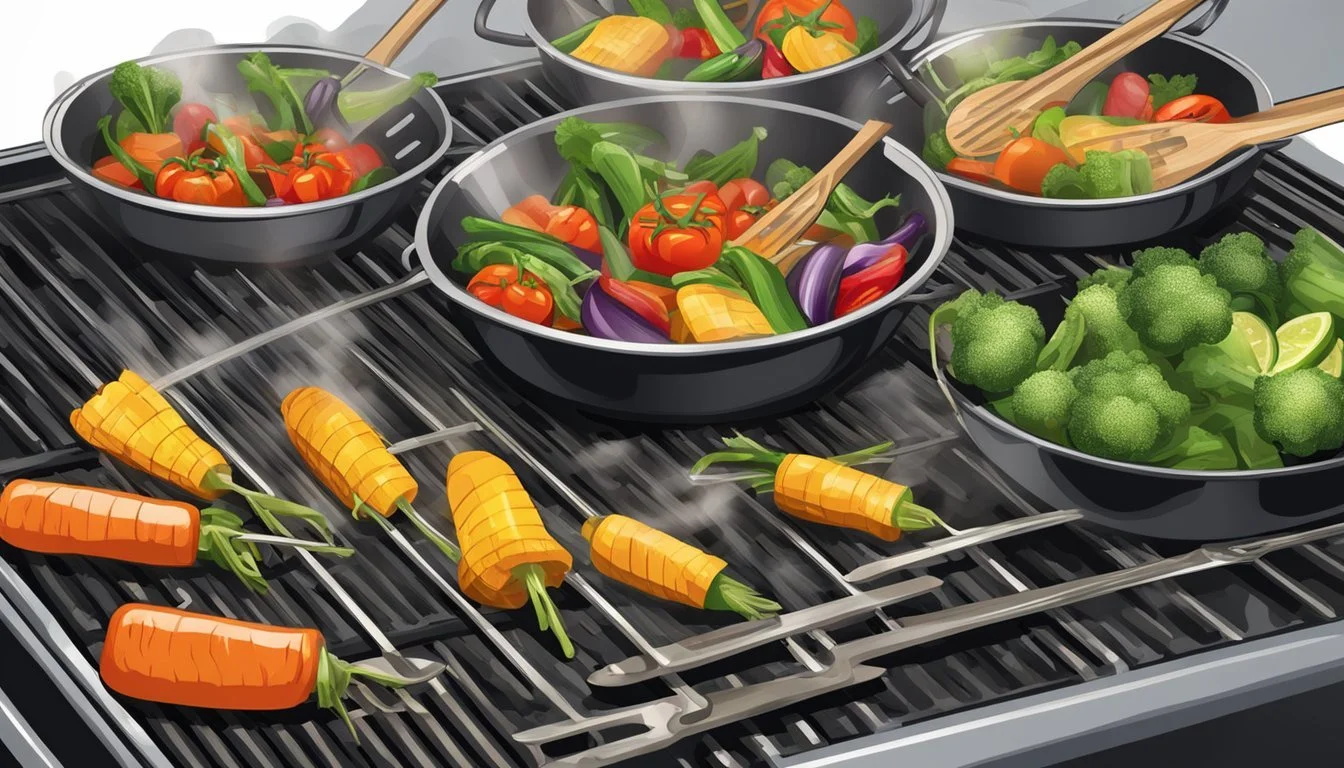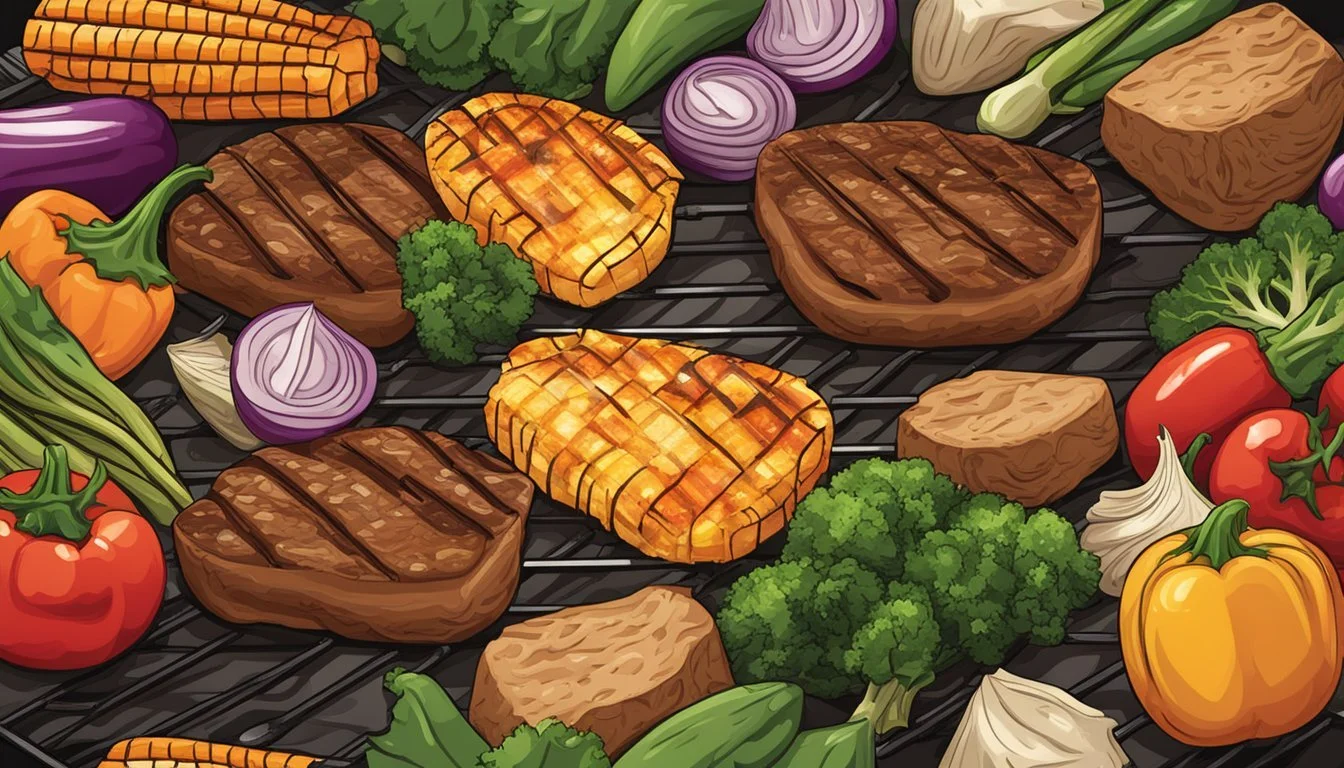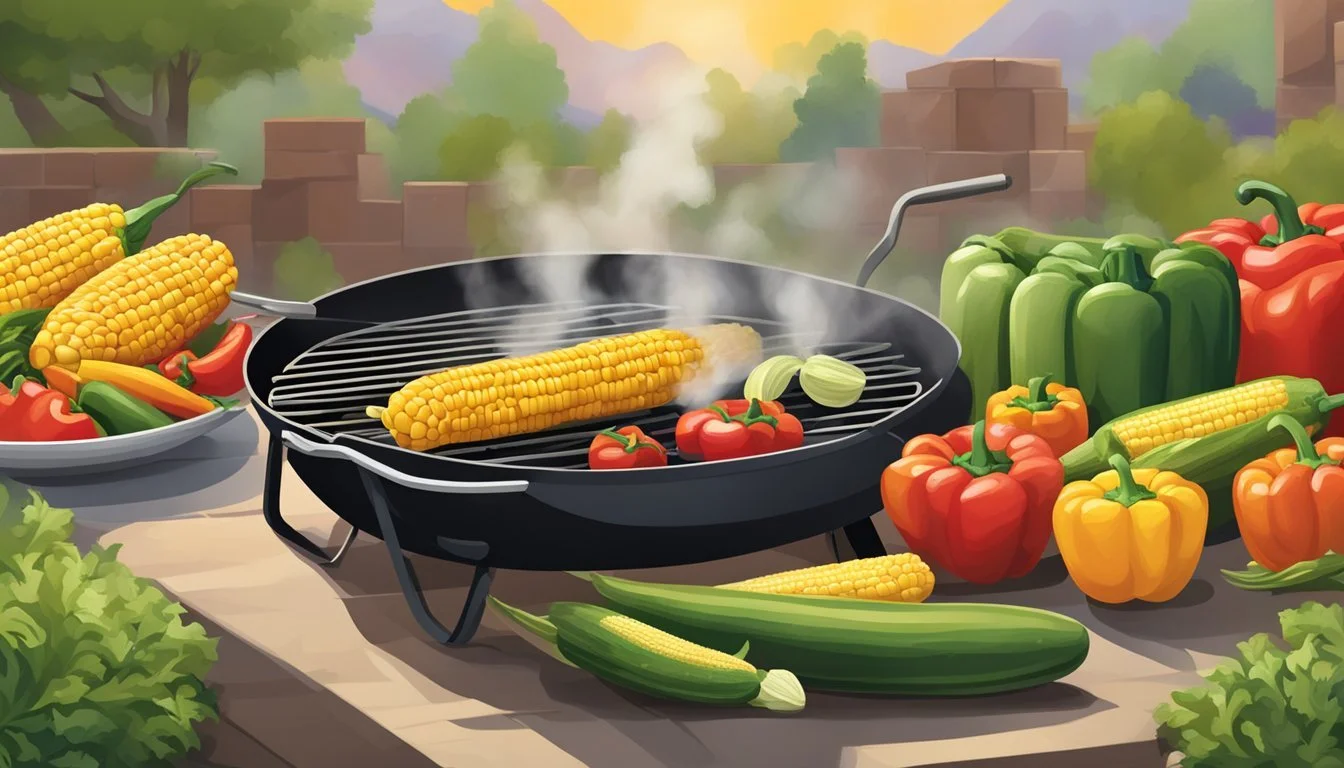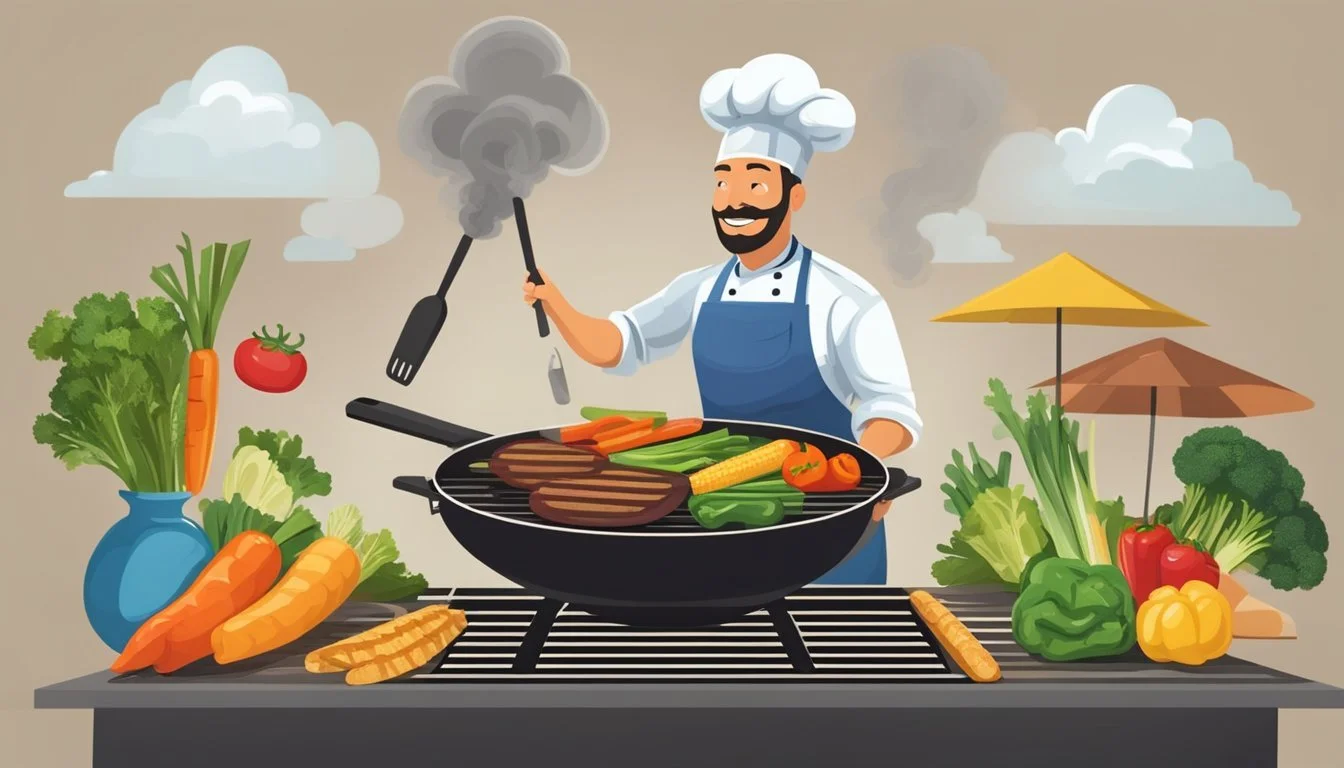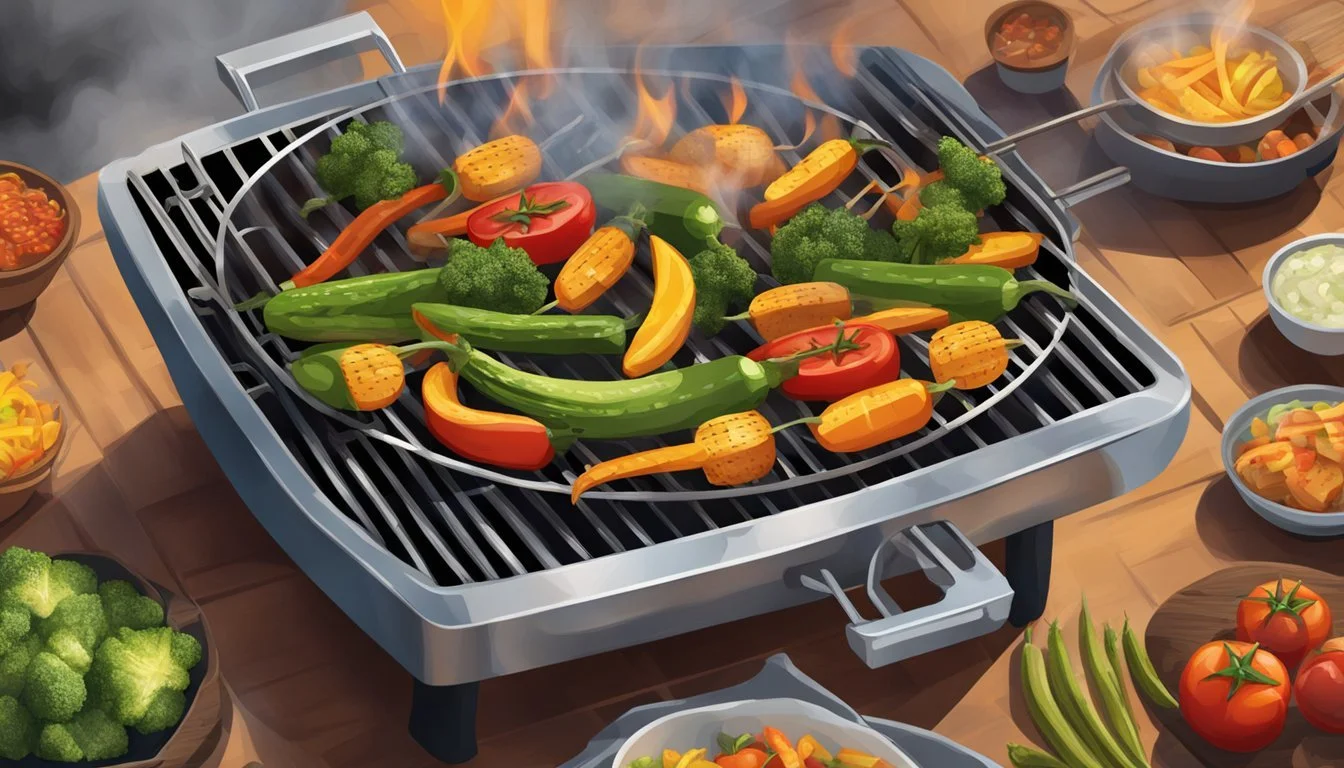How to Grill Texas-Style Vegetables
Mastering Smoky Flavors and Char Marks
When it comes to Texas-style BBQ, the spotlight often shines on succulent meats, but grilling vegetables Texas-style can elevate them to showstopper status beside any brisket or rack of ribs. Achieving that perfect char and smoky flavor requires understanding the heat of the grill and the best preparation methods for each type of vegetable. From the heartiness of squashes to the delicate nature of asparagus (What wine goes well with asparagus?), each vegetable has its own ideal approach to becoming a BBQ masterpiece.
In Texas BBQ, it's not just about the seasoning; it's about the technique and the marriage of smoke and heat. Vegetables like corn (how long does corn last?), bell peppers (What wine goes well with bell peppers?), and onions benefit from being cooked directly on the grill, absorbing the essence of the wood or charcoal. Others, such as sliced zucchini (What wine goes well with zucchini?) or cherry tomatoes, may require a different approach, such as a grill pan, to prevent them from slipping through the grates while still imparting that desired smoky flavor.
The preparation doesn't stop at the grill; marinating or seasoning vegetables is essential for that robust Texas taste. A simple marinade of olive oil, salt, and pepper can enhance the natural flavors of the produce, but for a true Texas-style experience, incorporating spices like chili powder, cumin, and garlic powder can complement the smoke and elevate the dish's profile. Grilled vegetables, (What wine goes well with grilled vegetables?) when done right, can stand proudly alongside smoked meats, making them an integral part of the Texas BBQ tradition.
Grilling Essentials
Grilling Texas-style vegetables requires particular attention to the equipment used, the techniques applied, and the mastery of heat and temperature. These essentials ensure that the flavors of the Lone Star State shine through in every bite.
Choosing the Right Equipment
The selection of grilling equipment is the first step to achieving Texas-style perfection. One has several choices:
Gas Grills: Provide ease of use and control over temperature.
Charcoal Grills: Offer a more traditional flavor, with fuels like hickory or mesquite adding a smoky taste.
Smokers: Ideal for slow-cooking vegetables, enhancing them with flavors from woods like post oak, which is a Texas favorite.
Type Wood Choices Flavor Notes Gas Grill — Clean, versatile Charcoal Mesquite, Hickory Rich, smoky Smoker Post Oak, Hickory Deep, robust
Grilling Techniques
Grilling techniques can vary depending on the type of vegetables and the desired outcome. Here are some methodical approaches:
Direct Heat: Suitable for larger, sturdier vegetables; cook them over the flames to get a charred, crispy exterior.
Indirect Heat: Best for denser vegetables that require longer cooking times without burning; use areas of the grill not directly over the flame.
Understanding Heat and Temperature
To grill vegetables Texas-style, understanding and managing the heat is crucial. Each vegetable has its own ideal temperature range for bringing out optimal taste and texture:
Medium-High Heat (375-400 degrees F): Common for grilling a variety of vegetables to achieve tender insides and slightly charred exteriors.
Preheating: Essential for ensuring a consistent cook and obtaining the hallmark grill marks that are the signature of grilling mastery.
Covering the Grill: Helps in creating an oven-like environment, ideal for thoroughly cooking through denser vegetables.
Remembering these essentials will pave the way for grilling success, bringing out the hearty and bold flavors Texans love in their grilled vegetables.
Preparation and Ingredients
Proper preparation and selection of ingredients are crucial to the success of grilling Texas-style vegetables. This should be done with care to ensure vegetables are grilled to perfection.
Selecting Vegetables
In Texas-style grilling, one typically chooses robust vegetables that can withstand high heat and develop deep, charred flavors. Look for fresh:
Bell Peppers (multiple colors for variety)
Zucchini
Yellow Squash
Onions
Portobello Mushrooms
Jalapeños (for a kick of heat)
Freshness is key, so vegetables should be firm to the touch and vibrant in color.
Pre-Grill Prep
Before heating the grill, there are several steps one should follow to prepare the vegetables:
Wash all vegetables thoroughly to remove any dirt or debris.
Trim the ends and remove any blemishes or tough skins.
Cut vegetables into large, flat pieces or spears to ensure even grilling and avoid falling through the grates.
Drizzle vegetables with a high smoke point oil such as canola or avocado oil.
Season generously with salt and pepper to enhance the natural flavors.
Allow the seasoned vegetables to sit for a short prep time, no more than 10-15 minutes, to absorb the flavors and ensure they are at an optimal temperature for grilling.
When using oil and seasoning, the goal is to coat the vegetables lightly yet thoroughly, so each piece has a layer of flavor and protection against the direct heat of the grill.
Marinades and Seasonings
The right marinade or seasoning blend can transform grilled vegetables into a flavorful Texas-style side dish. Essential ingredients like olive oil, vinegar, and a variety of spices play a crucial role in creating that signature taste.
Oil-Based Marinades
Oil-based marinades typically use olive oil as a base, which helps to keep the vegetables moist and create a surface that sticks to seasonings. For a Texas-style marinade, one might combine:
Olive oil: 1/2 cup
Vinegar: 3 tablespoons, such as apple cider or balsamic for tanginess
Sugar: 1 teaspoon, to balance the acidity
Garlic powder: 1 teaspoon, for a robust flavor
Salt and pepper: to taste, usually about 1 teaspoon each
To this base, additional herbs and spices can be added depending on the cook’s preference. Texan cuisine often favors bold flavors like cumin, chili powder, or smoked paprika.
Dry Rubs and Seasonings
For vegetables that will benefit from a drier, crustier exterior, a dry rub can be the way to go. A traditional Texas-style rub might include:
Salt: 1 tablespoon, for extracting moisture and enhancing taste
Black Pepper: 2 teaspoons, freshly ground for a spicy kick
Spices: a mix of 1 teaspoon each of dried thyme, oregano, and smoked paprika
Sugar: 1 tablespoon of brown sugar for a hint of sweetness
The cook should generously sprinkle or pat this combination onto the vegetables before grilling to infuse them with these aromatic flavors. The sugar will also help to caramelize the surface, providing a slightly crisp texture.
Grilling the Vegetables
Grilling imparts a distinct smoky flavor and char to vegetables that can elevate a dish to Texas-style proportions. Proper techniques and timing are key to achieving the perfect tenderness.
Vegetable-Specific Techniques
Corn: Leave the husks on to steam the corn internally, or remove husks and place directly on the grill for charred kernels.
Bell Peppers and Onion: Slice into wide sections to avoid slipping through the grill grates. Bell peppers can be grilled skin-side down until the skin blisters.
Zucchini and Yellow Squash: Cut into ½-inch thick slices; lengthwise for zucchini and crosswise for squash.
Cauliflower and Carrots: Slice into steaks or large chunks. Cauliflower (how long does cauliflower last?) steaks grill nicely when brushed with oil.
Green Beans and Asparagus: Use a grill basket to prevent small pieces from falling through, and for easier turning.
Red Onion: Slice into rings or wedges, ensuring they are thick enough to withstand the heat without breaking apart.
Bold flavors can be achieved by marinating or simply seasoning with salt, pepper, and olive oil before grilling.
Timing and Tenderness
Vegetable Approx. Total Time Tenderness Corn 15-20 minutes Tender kernels Bell Peppers 8-10 minutes Soft with char Onion 10-15 minutes Caramelized Zucchini 4-6 minutes Crisp-tender Yellow Squash 4-6 minutes Crisp-tender Cauliflower 10-15 minutes Tender-crisp Carrots 10-15 minutes Softened Green Beans 5-7 minutes Crunchy Asparagus 6-8 minutes Tender-crisp Red Onion 8-10 minutes Soft and sweet
For most vegetables, grill over medium heat and turn them halfway through to achieve even cooking. Some vegetables, like carrots and cauliflower, may benefit from being blanched before grilling to ensure a tender interior. Grilled vegetables should be watched carefully and removed from the grill once they've reached the desired tenderness to avoid overcooking.
Texas-Style Combinations
Grilling vegetables with Texas-style techniques adds a robust flavor that pairs wonderfully with various meats and traditional sides. The key to mastering these combinations is to match the boldness of the barbecue with complementary textures and flavors.
Meat Pairings
For a true Texas-style feast, the vegetables should complement the smokiness and savoriness of classic barbecue meats.
Brisket: Hearty and smoky, vegetables like bell peppers and onions can stand up to the rich flavor of a slow-smoked brisket.
Ribs: Pork ribs (What wine goes well with pork ribs?) with a spicy dry rub pair well with the sweetness of grilled corn or the slight bitterness of charred broccoli.
Chicken: Smoked or grilled chicken, especially when seasoned with a spicy rub, harmonizes with vegetables like zucchini or asparagus.
Bacon: Incorporate bacon into skewers of mixed vegetables for an added layer of flavor that resonates with the Texas barbecue essence.
Side Dishes
The traditional Texas barbecue is not complete without a selection of sides. Vegetables feature prominently in these dishes, either as a main ingredient or a complementary addition.
Baked Beans: Adding smoked vegetables like jalapeños can enhance the depth of flavor in this classic side dish.
Potato Salad: Grilled potatoes can provide a smoky twist to this staple, and when seasoned with traditional Texas spices, they offer a delightful contrast.
Coleslaw: A tangy slaw with crisp cabbage provides a refreshing counterpoint to the rich flavors of barbecued meats. (What wine goes well with barbecued meats?)
Cornbread: For a spicy twist, jalapeño cheddar cornbread serves as a delicious side that echoes the smoky heat of Texas-style grilling.
Sauces and Toppings
A great complement to the smoky flavors (What wine goes well with smoky flavors?) of Texas-style grilled vegetables comes from a selection of robust sauces and toppings. These enhancements should balance the char of the grill with a blend of sweetness, tanginess, and savory depth.
Barbecue Sauces
Texas Barbecue Sauce: The hallmark of Texas BBQ sauce is its ability to meld sweet and spicy flavors. A good Texas barbecue sauce typically includes ingredients like tomato paste, which provides a fruity base, molasses for a rich sweetness, apple cider vinegar for a tangy kick, and chili to add a bit of heat. The sauce should cling to the vegetables, offering a caramelized texture when grilled.
Variations: Chefs can personalize their barbecue sauces to suit their tastes. For instance, adding honey can introduce a smoother sweetness, while incorporating spices such as cumin or smoked paprika can intensify the Texas flair.
Homemade Condiments
Mayonnaise-Based Sauces: These condiments offer a creamy contrast to the hearty flavors of grilled vegetables. One can custom-make them by starting with a base of high-quality mayonnaise and then adding Dijon mustard for sharpness, sour cream to mellow out flavors, and a hint of garlic for a zesty punch.
Apple Cider Vinegar Mixes: These lighter toppings can serve as a refreshing foil to the smokiness of the grill. Combining apple cider vinegar with olive oil, herbs, and a touch of sugar or honey provides a quick and easy dressing that brightens the natural taste of the vegetables.
Health and Nutrition
When grilling vegetables Texas-style, one can not only enhance the flavors but also retain essential nutrients. Grilled vegetables offer a smorgasbord of vitamins and minerals, with relatively low calories and fats, contributing to a balanced diet when portioned correctly.
Vegetable Nutrition Facts
Vegetables are powerhouses of nutrition, and grilling them can lock in their natural goodness. Here is a snapshot of the nutritional value found in common vegetables used in Texas-style grilling:
Bell Peppers
Calories: Low
Water: High
Fiber: Medium
Vitamins: Rich in Vitamins A and C
Zucchini
Calories: Low
Water: High
Fiber: Medium
Vitamins: Good source of Vitamin B6
Calories: Low
Water: Medium
Fiber: Medium
Vitamins: Contains Vitamin C and Chromium
Mushrooms (portobello)
Calories: Very Low
Water: High
Fat: Low
Fiber: High
Grilling can change the nutrient profile slightly due to the high heat, but it generally preserves fiber and minerals well. It's important to note that olive oil or other seasoning used while grilling can add to the calorie and fat content.
Balanced Diet and Portion Control
Grilled vegetables should be a part of a balanced diet, which includes a variety of food groups. They provide essential nutrients with the benefit of being low in calories and fats. Portion control is also important; even healthy foods can contribute to weight gain when consumed in large amounts. A balanced plate may include:
1/2 Plate Vegetables: A mix of grilled veggies.
1/4 Plate Proteins: Preferably lean meats or plant-based proteins.
1/4 Plate Carbohydrates: Such as whole grains or starchy vegetables.
By incorporating a variety of vegetables and paying attention to portion sizes, individuals can enjoy the health benefits of a nutrient-rich diet that supports overall well-being without excess calorie intake.
Serving and Presentation
The art of serving Texas-style grilled vegetables lies in the balance between rustic charm and careful arrangement on the plate. Proper presentation enhances the appeal of the dish, tying it to its Texan roots while spotlighting the natural beauty of the vegetables.
Plating Techniques
For Texas-style grilled vegetables, one should aim for a casual yet intentional plating method. Layering is key; start with the heartiest vegetables like corn or sweet potatoes as a base, then artfully arrange more delicate items like asparagus or zucchini on top. Consider the color contrast; bright bell peppers against a charred corn background can be visually striking. Incorporate the grill marks prominently, as they are not only appealing but signify authentic grilling.
Accompaniments
When selecting accompaniments for grilled vegetables, one should think about traditional Texas-style BBQ elements that complement the dish. A simple table for pairing might include:
Vegetable Accompaniment Corn Fresh cilantro and a squeeze of lime Bell Peppers A dollop of chipotle aioli Zucchini Sprinkle of smoked paprika Mixed Vegetables Warm, buttered Texas toast on the side
The right accompaniment not only adds flavor but also contributes to the overall presentation of the dish, turning a simple recipe into an enjoyable feast.
Advanced Grilling Tips
When one grills Texas-style vegetables, understanding how to use smoke and manage different grilling weather conditions can significantly enhance flavors and textures.
Using Wood Chips and Smoking
Grill enthusiasts often use wood chips to infuse a deep, smoky flavor into vegetables. It's crucial to match the type of wood with the vegetable. For instance, mesquite, a common choice in Central Texas, imparts a bold taste that complements hearty vegetables like sweet potatoes and squash. The temperature plays a pivotal role as well; maintaining a consistent medium heat allows the smoke to permeate without burning the produce. When using a gas grill, one can place wood chips in a smoker box or wrap them in foil with holes poked in to let the smoke escape, placing it directly on the burner.
Grilling in Different Weather Conditions
Weather can impact grilling in various ways, making the ability to adapt a valuable skill. In hotter weather, vegetables may cook faster and are more prone to drying out, so it’s essential to monitor them closely and potentially use indirect heat for slower cooking. On cooler or windier days, it might take longer to preheat the grill and maintain the desired temperature, requiring adjustments to cooking times. Ensuring the grill lid is closed as much as possible will help maintain a steady cooking environment for the vegetables.
Additional Texas BBQ Favorites
Texas-style BBQ isn't just about the meat; the vegetables and sides play a crucial role in creating a complete dining experience. They bring a variety of flavors, textures, and colors to the table, complementing the smokiness of the grilled meats.
Cornbread and Breads
Cornbread, a Texas BBQ staple, is a must-have for its sweet and savory balance. A classic recipe combines cornmeal, flour, baking powder, milk, and eggs to create a moist, cake-like bread that's often sweetened with a hint of sugar. Baking it in a preheated oven at 400°F (200°C) ensures a crispy crust with a tender inside. For variety, one might include cheddar cheese or chopped jalapenos for an extra kick.
Breads at a Texas BBQ can range from simple garlic toast to more elaborate artisanal loaves. They are perfect for mopping up sauces and enjoying the full array of BBQ flavors on offer.
Texan Salads and Sides
In addition to the hearty breads, Texas BBQ favorites include a range of Texan Salads and Sides. Vegetables like grilled sweet potatoes, grilled zucchini (What wine goes well with grilled zucchini?), grilled brussels sprouts, (What wine goes well with grilled Brussels sprouts?) and easy grilled corn bring a smoky flavor that mirrors the main dish.
Tomato Salad: A refreshing side is a simple tomato salad, often featuring ripe tomatoes, celery, parsley, and a light vinaigrette with celery seeds.
Smoky Beans: Another essential side dish is a pot of smoky navy beans, sometimes enhanced with a hint of cream for richness.
Vegetables often found at a Texas BBQ food truck include yellow squash, turnips, beets, and broccoli, usually grilled over an open flame to achieve a delightful char. These are tossed in olive oil, salt, and pepper, highlighting their natural flavors without overpowering the main attraction.
Recipes and Cooking Times
When grilling vegetables Texas-style, it's essential to consider the unique characteristics of each vegetable to achieve perfect char and tenderness. Cooking times may vary based on heat level and size of the produce, but the right timing ensures each veggie complements the richness of Texas BBQ mains like pulled pork and ribs.
Sample Vegetable Grill Times
Cooking times vary by vegetable. Below is a sample table of grill times for popular Texas-style BBQ vegetables:
Vegetable Preparation Grill Time Corn Husk removed, on direct heat 10-15 minutes Bell Peppers Halved, seeded, on direct heat 8-10 minutes Zucchini Sliced thickly, on direct heat 4-6 minutes Onions Sliced in rounds, on direct heat 8-10 minutes Asparagus Trimmed, on direct heat 4-6 minutes
For the best results, the grill should be preheated to medium-high and the vegetables should be turned halfway through the grilling time.
Full Texas BBQ Menu
A full Texas BBQ menu features a variety of smoked meats paired expertly with grilled vegetables.
Pulled Pork: Slow-cooked for several hours until it is tender enough to be "pulled" apart. Seasoned with a blend of Texas-style BBQ spices.
BBQ Ribs: Rubbed with a dry spice blend and smoked over low heat for several hours until the meat pulls away from the bone.
Grilled Vegetables: Often include corn, bell peppers, zucchini, onions, and asparagus, adding a fresh and flavorful complement to the smoky meats.
Additional Smoked Meats: A true Texas barbecue might also include brisket or sausage, smoked for many hours to achieve the characteristic flavor and tenderness associated with Texas BBQ.
Remember to always rest smoked meats before serving to allow the juices to redistribute, ensuring a moist and flavorful experience. Grilled vegetables should be served straight off the grill to enjoy their crisp, smoky essence.

